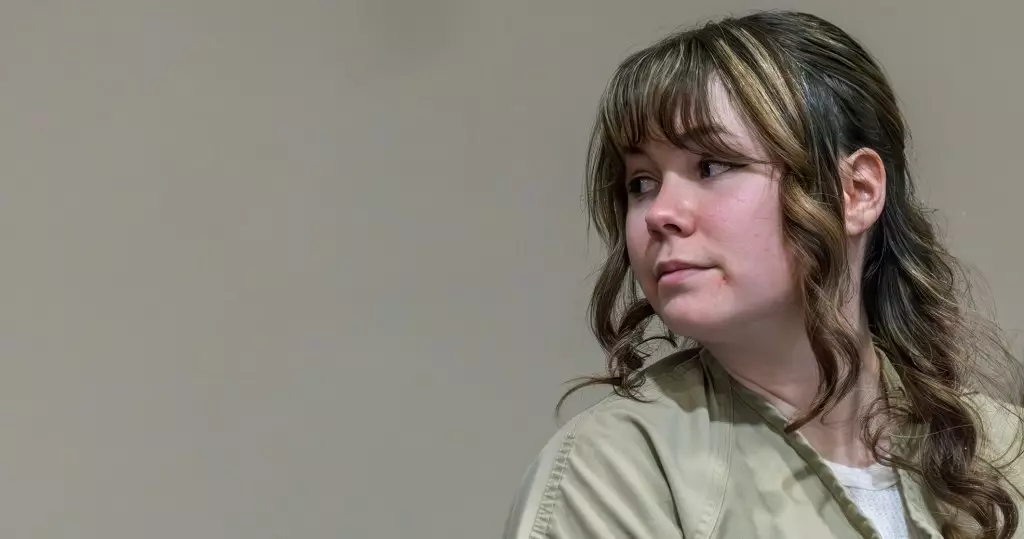The tragic shooting of cinematographer Halyna Hutchins on the set of “Rust” sent ripples through the film industry, raising critical questions about safety protocols and responsibility in filmmaking. As the dust continues to settle on this dark episode, one name reemerges: Hannah Gutierrez-Reed, the film’s armorer. Recently, she was granted parole after serving 85% of her 18-month sentence, becoming a focal point for discussions on accountability and the complexities of the entertainment industry.
In a landscape where the need for reform is urgent, Gutierrez-Reed’s release has been met with mixed reactions. While many see the move as a step toward her rehabilitation, others argue that it underscores a failure to address the systemic problems that allowed such a tragic incident to occur in the first place. The dynamics of a high-stakes film production, especially one with financial strains and staff turnover, should not overshadow the grave responsibilities tied to handling weapons on set.
The Inexperienced Armorer and Systems at Play
Hannah Gutierrez-Reed, the daughter of renowned gun coach Thell Reed, was thrust into the spotlight not merely as an individual responsible for the tragic mishap but as a representative of a system that may have inadequately equipped her for the complexities of her role. The factors leading to live ammunition making its way onto the set of “Rust” are multifaceted. Reports indicated that the production faced immense time constraints and budget cuts, which likely pressured all departments, including armoring, to cut corners.
This incident beckons the question: how can production companies ensure that the safety of crew members is not secondary to profit margins? The gravity of Hutchins’ death cannot be understated and raises the need for improved protocols that prioritize the well-being of all involved. With Gutierrez-Reed now navigating her parole under strict regulations—prohibited from any form of contact with Hutchins’ family—it’s clear that the scars of this tragedy extend beyond what can be managed by the judicial system.
A Tale of Contrasts: Baldwin and Gutierrez-Reed
The stark disparity between the treatment of Gutierrez-Reed and actor Alec Baldwin sheds light on the complexities of justice in high-profile cases. Despite his involvement in the incident, Baldwin’s legal difficulties evaporated almost as fast as they appeared, raising eyebrows about fairness and privilege within the justice system. While Gutierrez-Reed must grapple with strict parole conditions including job-seeking, mental health assessments, and regular check-ins with a parole officer, Baldwin’s experience serves as a glaring example of how public perception and media coverage can influence legal proceedings.
This juxtaposition invites a deeper examination of the ethical responsibilities individuals carry in creative environments. Should the camera-ready actor share the weight of such tragedies equally with crew members who operate behind the scenes? When celebrity status collides with accountability, it fosters a troubling narrative—one that suggests some may be more privileged when it comes to facing the consequences of their actions.
The Aftermath: Film Industry Reflection and Future Implications
Moving forward, the film industry must conduct a thorough reflection on what led to this tragic incident and how similar situations can be avoided in the future. As Gutierrez-Reed steps into a new chapter of her life, her struggle for redemption should not distract from the urgent need for comprehensive changes across all areas of filmmaking, particularly regarding weapon safety and crew dynamics.
The reactive measures implemented post-“Rust” should not merely serve as public relations appeasements but as substantial reforms that challenge the status quo. Training programs should be compulsory, and transparency in hiring practices must become the standard. As the bittersweet release of Gutierrez-Reed captivates the public’s attention, it simultaneously evokes a pressing dialogue on how the film industry must evolve to protect its creators while respecting the memories of those tragically lost.
Ultimately, the events surrounding Halyna Hutchins’ death stand as an unsettling reminder that every piece of a production is interconnected, and neglecting any part of the machine can have unprecedented repercussions. As conversations about safety and responsibility continue, those within the industry should strive for a balance between artistic expression and the fundamental right to life and safety.


Leave a Reply